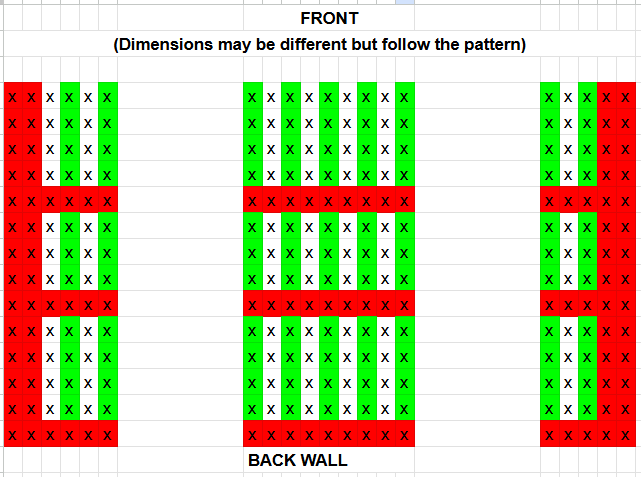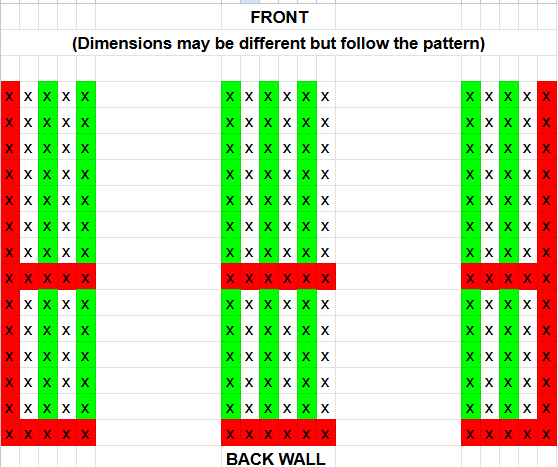MT2 Info
Overview and Proces
MUST BE TAKEN IN PERSON / NO REMOTE EXAMS
- Time/Date: Wed, Nov. 5 at 7 p.m. Pacific
- Duration: 100 minutes (1 hour, 40 minutes)
- Location based on Last Name Starting Initial:
- Do not sit in the back row of each room nor in the 2 columns closest to the wall as we need to be able to see your laptop screens for proctoring purposes.
SAL101

SLH 200

- Do not angle your laptop screen toward the wall. We must be able to see your screen reasonably well from the back of the room.
- Bring: A laptop or tablet with a minimum of 100 minutes battery run-time. Don’t count on outlet access.
- Format: You will write your code on Codio and can compile and test if you wish. However, you will then download/upload or copy/paste your code for each problem to a corresponding MT2 form on Gradescope. (Due to issues with Codio, this ensures we have a snapshot of your code when the exam ends that cannot be altered). More specifically:
- The test will be taken on Codio and Gradescope by logging into our Brightspace section, choose
Content..Exams..MT2 Codiowhich will redirect you to Codio. You can also login to Gradescope where you’ll submit a copy of your code. You can also click on theMT2 Gradescopelink to copy/paste your code. - The test will consist of 2 programming problems. The question prompts will be given on a paper handout provided at the start of the exam and you can use the back of those pages for any scratch work you want. Once the exam, starts you MUST use Codio to develop your code (no separate editors or websites). You are free to try to compile and run your code. We will likely provide 1-2 automated tests just to give you some feedback as to whether your code works. BUT the tests are NOT exhaustive. Just because you pass those tests doesn’t mean your code is without error.
- Once your satisfied with your code, you MUST copy/paste (or download/upload) your code from Codio back into Gradescope where we will grade it. We do this to get a snapshot of your code at submission time since Codio has issues preventing access. All coding problems will be graded visually and need not run to get partial credit.
- The test will be taken on Codio and Gradescope by logging into our Brightspace section, choose
- Questions: Any questions about the content of the exam (clarification, etc.) should be asked on EdStem (and not by raising your hand) to avoid disrupting your neighbors.
- Policies:
- No cheatsheet will be allowed since this exam is focused on writing code. We will provide some reference material for specific functions in Codio itself.
- The exam is Closed book, Closed notes, Closed Internet (search/reference/chatGPT or other AI-tool). You may only access the following websites: Gradescope.com, Codio.com, and Piazza.com for asking questions. Other than that your mind and scratch paper are the only resources allowed. Any violation of these rules will result in a report to the Office of Academic Integrity with a proposed sanction of F in the class.
- Coding may only be done in Codio and NO OTHER editors.
- No calculators, phones, or textbooks are allowed.
- You must request to use the restroom or leave the classroom for any reason and only 1 person will be allowed to leave at a time.
- You may not have headphones or earbuds in.
- If your laptop crashes, you may write your code on the paper exam (but will not have the advantage of typing/editing code.) and must let us know clearly when submitting it that you want us to grade your paper exam. (We will throw out other paper exams after collecting them, since we expect the code to be online).
- With 10 minutes remaining, no one will be allowed to leave the classroom (no bathroom use or leaving if you are finished). If you finish, simply close your laptop and sit quietly. Do NOT work on anything else. If you finish earlier, you may leave but need to sign out before you leave the room.
- All answers and code must be submitted on Gradescope by 8:40 p.m. (not Codio) and anything after 8:40 will be consider a violation and will result in SEVERE penalties!
- Comments are NOT required and indentation is highly suggested but would only lead to a deduction if egregious formatting is used.
- Again, problems will be visually graded (not compiled and tested automatically). Thus a large amount of partial credit can be given even if your code does not compile or if the output is not exactly correct. We will look for the root cause in the source code and award and deduct based on that.
- Grading
- To receive a +1 score, you must pass BOTH programming problems (not just 1).
- The first problem will be graded fully by automated tests. You must pass those tests to get credit for that problem.
- The second problem will have automated tests to give you feedback about your code, but it will be graded visually after the fact by our staff. Your code must work and follow the given requirements. We will evaluate your code to determine it’s quality. If only a minor mistake is present, which if fixed, would lead to a working solution, you can still receive credit.
Topics
Unit 0b
- Data Types
- Constants
Unit 0c
- Algorithms
- Syntax vs. Semantics
Unit 1a
- Expressions (understand various operations and operators such as
%and/) - Output with
cout - Input with
cin
Unit 1b
- Variables and assignment
- Statements
- Libraries (eg. Math function calls)
- I/O manipulators:
setprecision, andfixed
Unit 1c
- Division and Modulo operators
- Assignment operations (shift and rotations)
Unit 1d Conditional Statements
- Conditional statements
- Comparison operators
if,if..else, andif..else if...elsestatements- Logical operators (
&&,||, and!)
Unit 2a and 2b Loops
whileloopsforloops- Tracing of loops
- Loop coding
breakstatement
Unit 2c Arrays
- Declaring and sizing
- Accessing elements (with an index)
- Loops and arrays
- Initialization with constants
Unit 2d Strings
- C-Strings (character arrays) vs. C++
strings differences and similarities - Issue with
cinand C-strings - What C-Strings cannot do
stringarray access, size, comparison, and substrings
Unit 3a Nested Loops
- Tracing and behaviour
breakbehavior in a nested loop
Unit 3b and 3d Array Tasks
- Use of sequential or nested loops (when each is needed)
- Computational/Algorithmic thinking and code development
Unit 3d Debugging
- (No specific questions on MT2)
- Debugging techniques
Ways to Prepare
- Choose relevant Programming problems at the end of each chapter in the textbook.
- Study the slides (less helpful since you’ll be coding)
- Redo the in-class exercises by clicking the “Reset to Scaffold” button, especially the “Array Tasks” exercises.
- Redo your HW/Lab exercises
- Online MT2s
- For the following samples, time yourself and try to limit yourself to 100 min.
- Note: The writeups (problem statements) are on Gradescope, but we have made a Codio Assignment where you can write your code. However, no automated tests are provided. You will need to test it yourself using the examples provided in the writeup. Please practice downloading your code from Codio and submitting it back to Gradescope (or copy/pasting).
- Sample MT2 (MT2-Sample) on Gradescope
- Sample Fall 2020 MT2 (MT2-Sample-20203) on Gradescope
- Sample Spring 2021 MT2 (MT2-Sample-20211) on Gradescope
- Solutions are linked in the Guide writeup at the end of Codio assignment.
- Fall 2024 MT2
- Fa24 Midterm2 Handout
In your MT2, you will be given a paper exam with the question prompts. Then, on Brightspace you’ll find links to a Codio assignment where you can write your code and test it. Finally, you’ll copy/paste or download (right-click on the file in the left-pane on Codio) and upload it to Gradescope. PRACTICE this process at least once so that you can do it quickly. If you can’t upload/paste your code into Gradescope on time, you may receive a 0.
- Solutions are linked in the Guide writeup at the end of Codio assignment.
